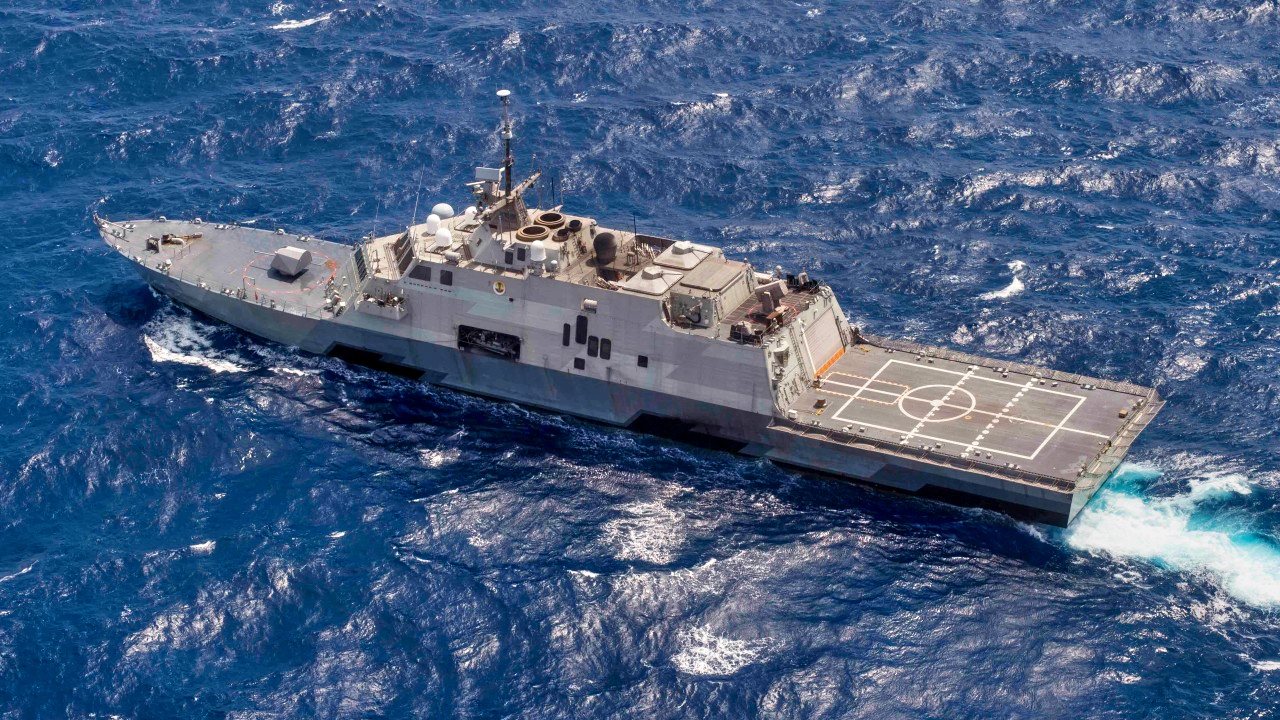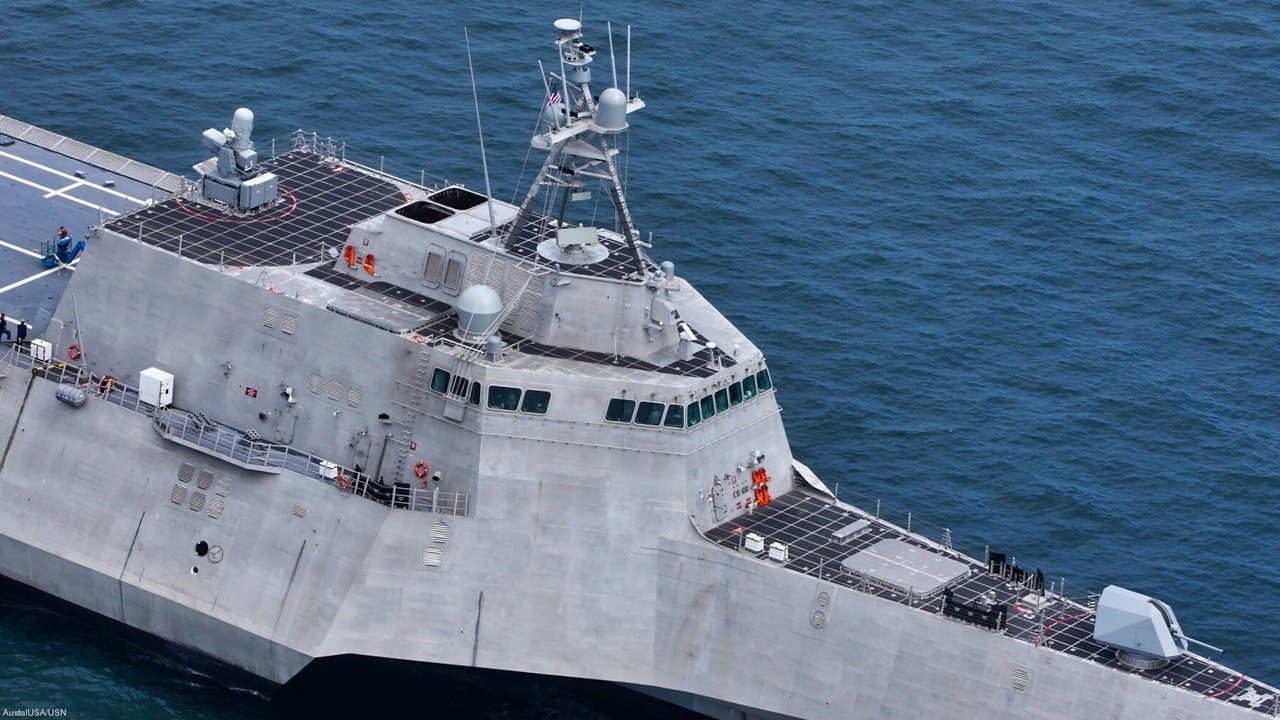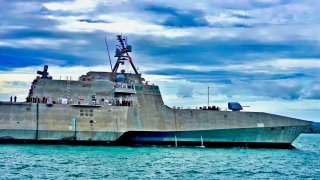The Navy's Littoral Combat Ship Could Make the Ultimate Comeback
Originally, the United States Navy had planned to operate 32 Littoral Combat Ships. However, the service has reduced the fleet to 23 ships. And now Greece may get some of them.
Littoral Combat Ship: Could the U.S. Navy's Crappy Little Ships Be Headed to Greece? - The United States Navy has seemed lost in what to do with its Littoral Combat Ships (LCS), and even as new vessels have been commissioned, others have been taken out of service years ahead of schedule. It is one of the greatest and clearest examples of government waste in recent memory.
It was just last week that an assessment was made that the LCS are ill-suited to a deployment in the Red Sea to help protect commercial shipping from the Iranian-backed Houthi rebels that control parts of Yemen – and the small warships are equally the wrong vessel to even think about engaging the Chinese in the waters of the South China Sea.
As previously reported, there is some irony in that the LCS was designed specifically to operate in littoral waters like the Red Sea or the South China Sea – while the program began when the U.S. military was engaged in the Global War on Terror (GWOT) following the September 11, 2001 attacks. The LCS was seen as ideal for combating missile-firing boats, and even small submarines, while it was envisioned that the stealthy surface combatants could be capable of defeating anti-access and asymmetric threats in littoral or near-shore waters.
The U.S. Navy is now planning to decommission nine of 35 littoral combat ships in the next few years, alongside the five already removed from service. Some of those vessels entered service less than five years ago. While U.S. Navy officials have noted it will save money in the long-term, decommissioning these ships early sill amounted to a loss of almost $7 billion based on analysis by Defense News using data from the Congressional Budget Office.
Originally, the United States Navy had planned to operate 32 Littoral Combat Ships. However, the service has reduced the fleet to 23 ships.
Littoral Combat Ship Comeback: Sell Them to Greece?
One possible way for the Pentagon to get out of the LCS program may be for the "Little Crappy Ships" – as they've become known – to be transferred to a regional U.S. ally. There has been discussion of transferring to U.S. partners in South America, where the LCS could be well-suited to drug interdiction patrols.
However, it was just last week that U.S. Secretary of State Antony Blinken floated an idea to provide at least four of the small vessels to Greece. Athens is eager to modernize the Hellenic Armed Forces, and the LCS could be well-suited to patrols around the thousands of Greek islands.
Currently, the Hellenic Navy operates four La Combattante III-class corvettes, originally acquired in 1977-78, as well as four Meko-200HN-class frigates procured since the early 1990s, Naval-Technology reported. Athens would seems interested in the Lockheed Martin-produced Freedom-class variant, which features a high-speed, semi-planning mono-hull.
What's the Problem?
To date, the Littoral Combat Ship hasn't come close to delivering on that promise.
The vessels were meant to emphasize speed and were to utilize flexible mission modules while operating where larger warships could not. However, the ships have been prone to breakdowns. Moreover, after Congress cut the funding for the mission modules, the U.S. Navy was left with small and fast ships that weren't equipped for much besides anti-drug operations with the U.S. Coast Guard.
Part of the issue is that without the mission modules, the LCS has no long-range air defenses, and thus can't protect themselves from Houthi missiles and drones. Moreover, with no long-range land-attack weapons, the LCS can't strike back at the Houthi positions within Yemen. This raises the question of how the small warships would far against a larger and more sophisticated adversary such as China.

A 2022 report warned that half of the LCS fleet had suffered from structural defects that have led to hull cracks on several vessels, limiting the speed and sea states in which some ships can operate. Cracks in the hull can also grow if the ships transits faster than 15 knots in seas with maximum wave heights of about eight feet.
According to a report last year from the government watchdog Pro Publica, "Littoral combat ships were supposed to launch the Navy into the future. Instead they broke down across the globe and many of their weapons never worked. Now the Navy is getting rid of them. One is less than five years old."

Secretary Blinken's desire for the transfer of four LCSs to Greece, which would need Congressional approval, could be a step forward in the modernization of the Hellenic Navy while giving new life to the warships rather than seeing them just scrapped.
Author Experience and Expertise: Peter Suciu
Peter Suciu is a Michigan-based writer. He has contributed to more than four dozen magazines, newspapers, and websites with over 3,200 published pieces over a twenty-year career in journalism. He regularly writes about military hardware, firearms history, cybersecurity, politics, and international affairs. Peter is also a Contributing Writer for Forbes and Clearance Jobs. You can follow him on Twitter: @PeterSuciu. You can email the author: [email protected].


